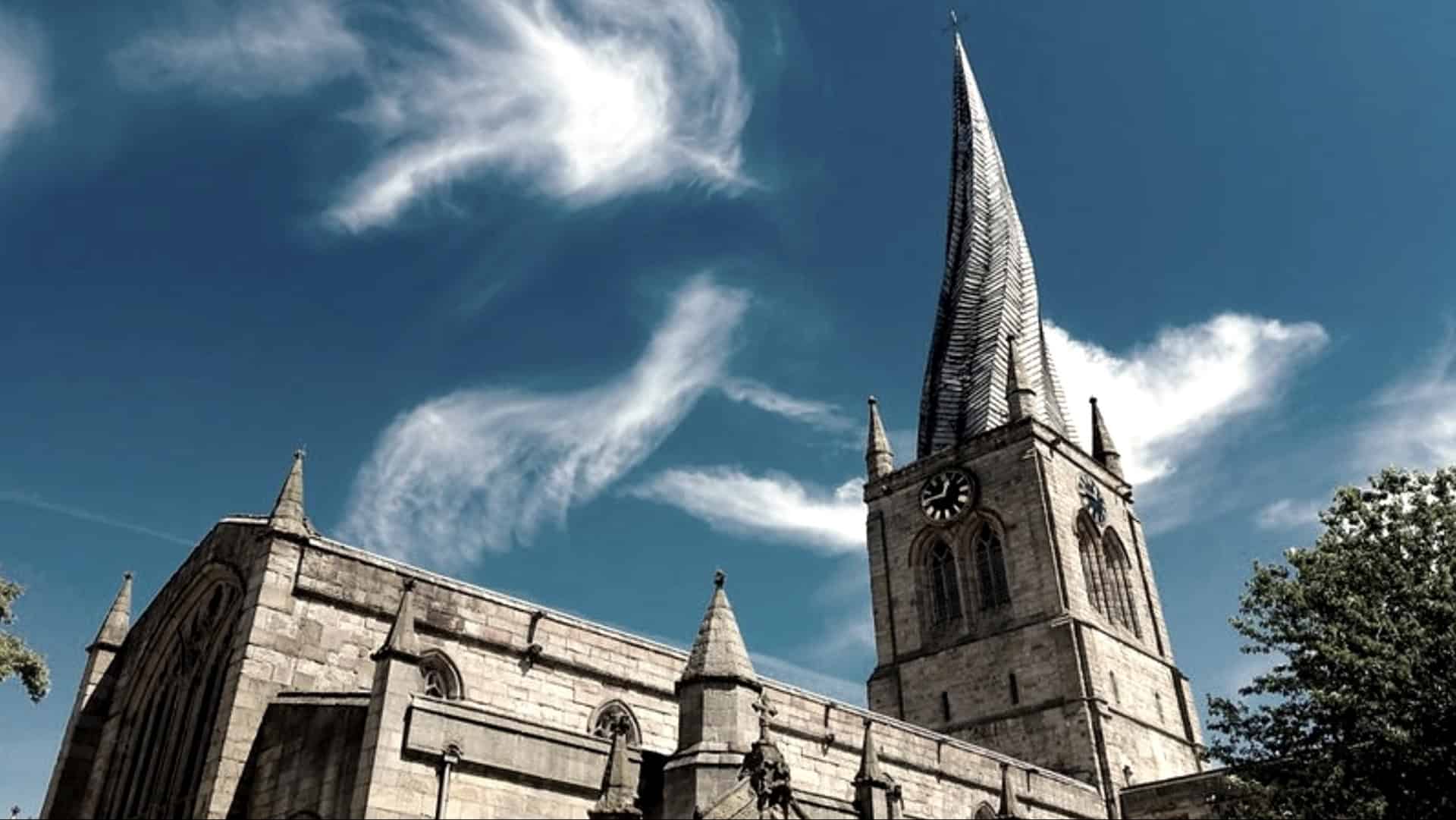Nestled in Chesterfield, Derbyshire, this Anglican marvel stands as the largest parish church in the Diocese of Derby.
Renowned for its distinctively twisted spire, St. Mary and All Saints Church, affectionately known as the Crooked Spire, is a Grade I listed building.
Its unique design captivates visitors and historians alike, offering a glimpse into both its medieval roots and its architectural evolution.
Join us as we explore 10 fascinating facets of this Gothic icon.
1. Anglo-Saxon Origins
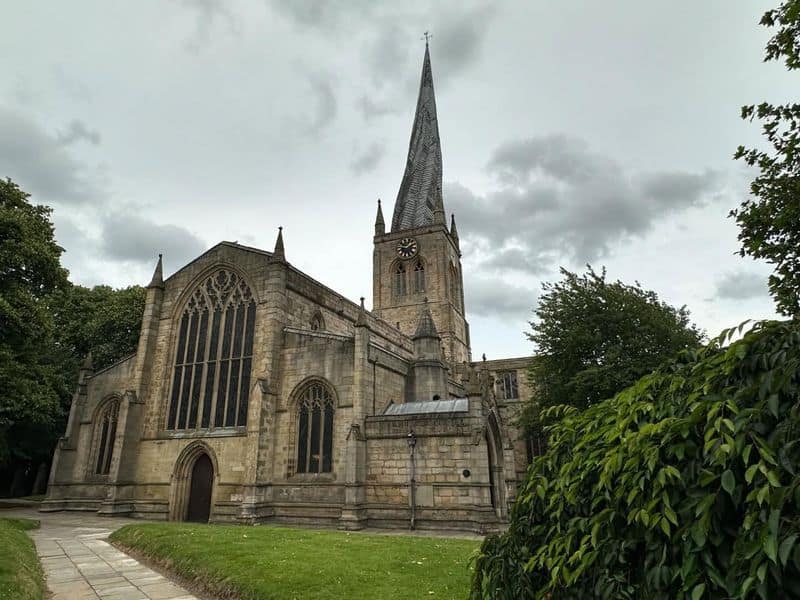
Unearth the ancient roots of this site. The present church owes its foundations to an Anglo-Saxon church, with traces dating back to the 9th century.
A font from this era, nestled in the south transept, serves as a tangible link to its illustrious past. This piece reflects the craftsmanship and religious devotion of a bygone age.
Its presence within the church walls invites contemplation of the enduring legacy of Chesterfield’s spiritual heritage.
2. The 45-Degree Twist
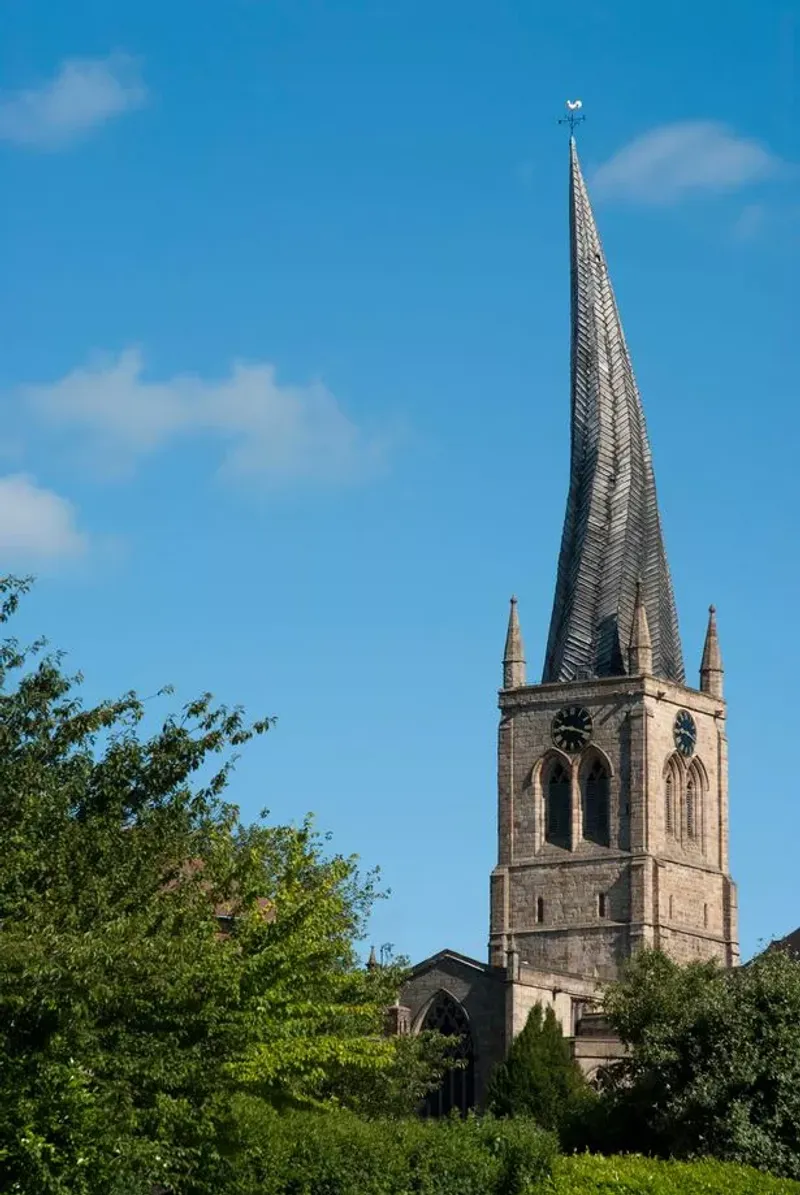
An enigmatic twist defines the spire’s allure. Rising to 228 feet, it twists a remarkable 45 degrees, leaning over 9 feet off-center.
Theories abound regarding its cause, from unseasoned timber to lead expansion. This architectural anomaly offers a striking silhouette against the Chesterfield skyline.
Its distinct lean has become a celebrated symbol, sparking curiosity and wonder. Whether by design or accident, this twist weaves a tale as captivating as the church itself.
3. The Great Restoration of 1843
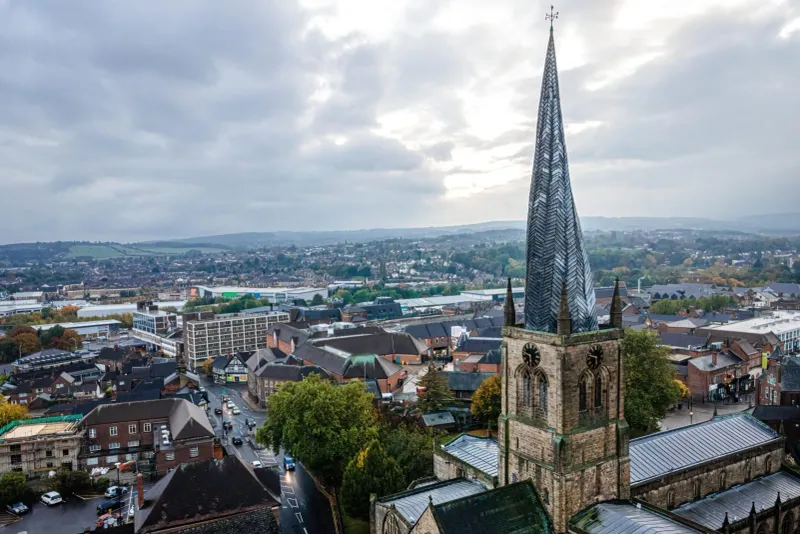
In the 1840s, the church underwent a transformation guided by the vision of Neo-Gothic architect George Gilbert Scott.
This ambitious restoration introduced a new ceiling and a striking east window, painted by William Wailes.
Such enhancements revitalized the church’s interior, preserving its medieval charm while embracing modern aesthetics.
Scott’s efforts ensured that the Crooked Spire remained a beacon of architectural beauty and historical significance for future generations.
4. A Peal of Bells
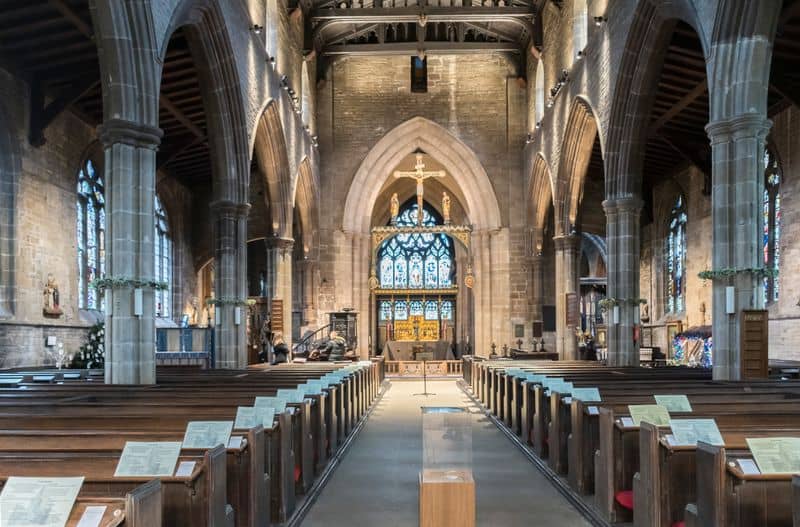
Imagine the melodic chimes echoing across the landscape. In 1810, a set of ten bells was installed, resonating for miles.
These bells played a crucial role in the community, marking time and events. Despite challenges, they continue to ring, preserving a tradition that bridges past and present.
Their harmonious sounds add an auditory charm to the visual splendor of the church, making every visit a multi-sensory experience.
Their enduring presence amplifies the Crooked Spire’s legacy.
5. Legend of the Devil’s Sneeze
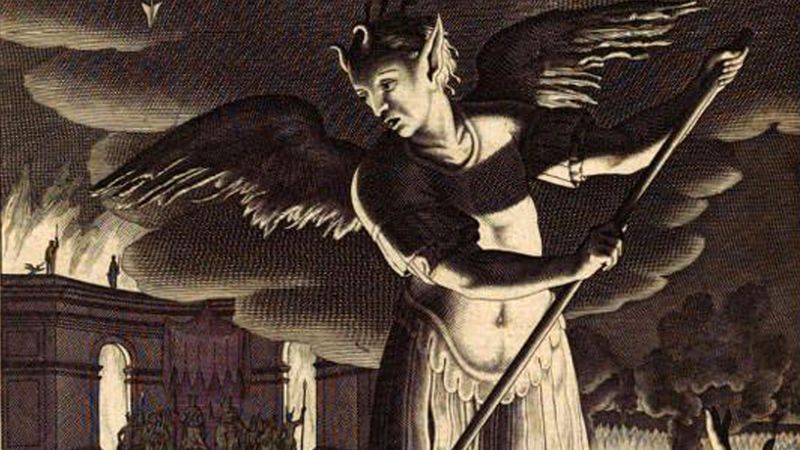
Legends swirl around the spire’s twist, with a tale as imaginative as it is intriguing.
The devil, it is said, rested upon the spire, but a whiff of incense made him sneeze violently, causing the spire’s distinctive warp.
This whimsical story adds a layer of folklore to the church’s history, capturing imaginations and delighting visitors of all ages.
Such tales enrich the cultural tapestry, inviting all to ponder the line between myth and reality at the Crooked Spire.
6. The Infamous Fire of 1961
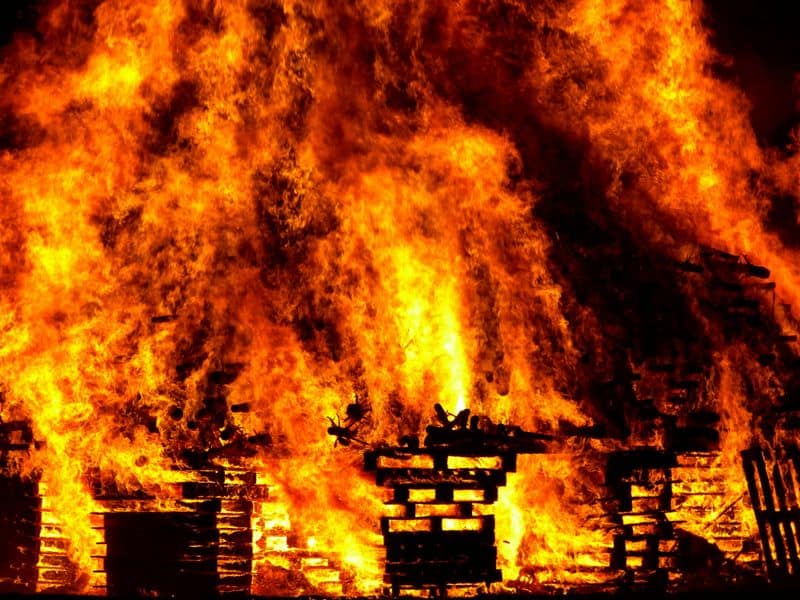
A blaze in December 1961 threatened to erase centuries of history. Swift actions saved much of the church, though the north window’s glass succumbed to flames.
This calamity also claimed a rare 1756 Snetzler organ. Yet from the ashes, resilience emerged.
Restoration efforts replaced the organ, echoing the church’s enduring spirit.
This event underscores the community’s dedication to preserving its heritage, ensuring the Crooked Spire continues to inspire awe and remembrance.
7. The Prentice Bell Tradition
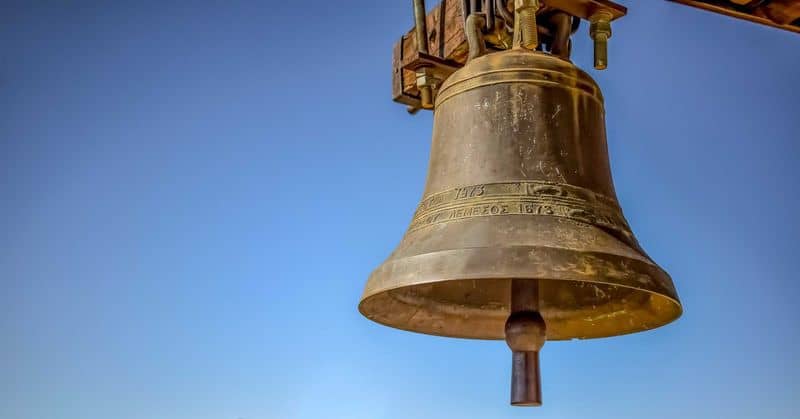
A unique auditory tradition resonates each Shrove Tuesday. The Prentice Bell, an ancient Angelus bell, rings at a quarter to eleven, heralding the start of pancake feasts.
This custom, steeped in history, connects the community to its medieval roots, creating a festive atmosphere.
The bell’s singular chime is a reminder of the church’s rich heritage, harmonizing with the joyful spirit of the day. Such traditions breathe life into the walls of the Crooked Spire.
8. Windlass and Bells
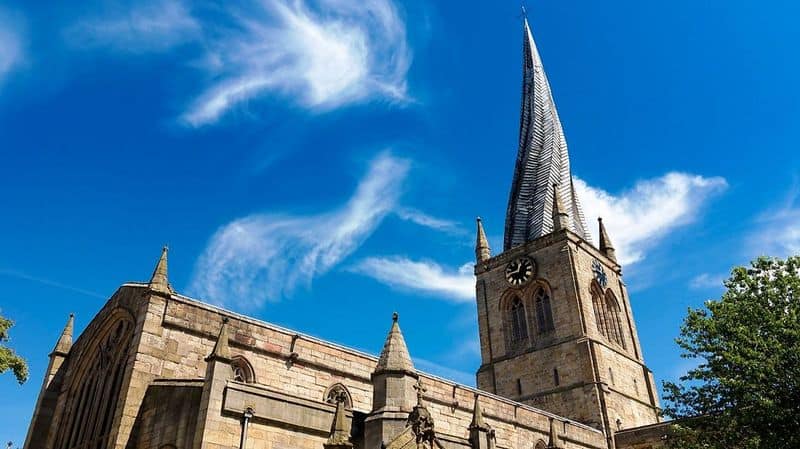
Within the steeple’s embrace lies a medieval marvel. The windlass, a rare example of a medieval crane, once aided builders in their grand endeavors.
Today, it stands as a testament to the ingenuity of the past. The bells, cast in 1947, continue to echo through the ages, reinforcing the church’s enduring legacy.
Together, they tell a story of innovation and tradition, inviting exploration and admiration. These elements enrich the architectural narrative of the Crooked Spire.
9. Stained Glass Narratives

Illuminate the church’s vibrant history with stained glass. In 1984, new windows graced the south aisle, depicting Chesterfield’s journey through time.
These colorful panels serve as visual storytellers, capturing pivotal moments and figures from the town’s past.
Such artistry enhances the church’s ambiance, offering both beauty and insight.
The interplay of light and color creates a dynamic display that enchants visitors, inviting reflection on the intertwined tales of the Crooked Spire and its community.
10. A Tourist’s Ascent
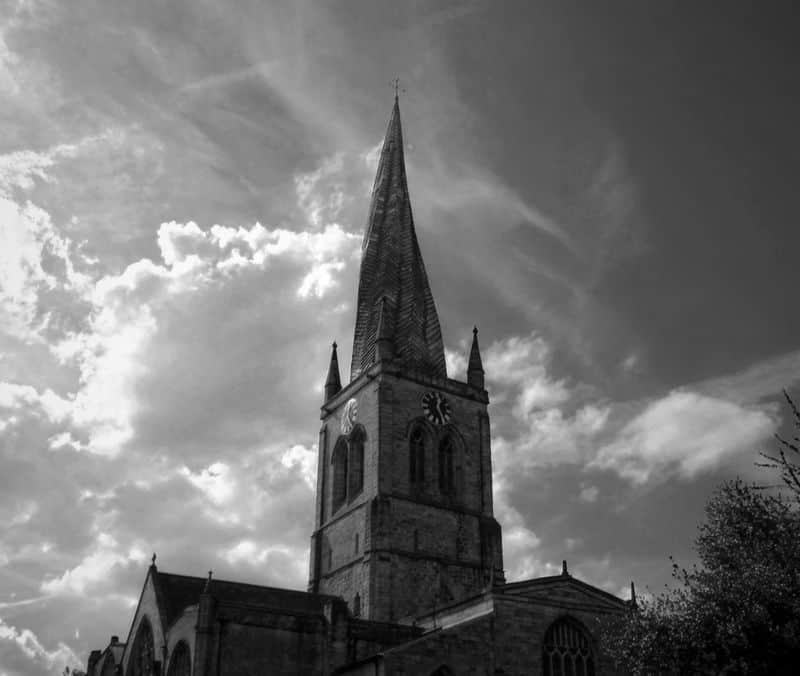
Embark on a journey skyward with a tour of the spire. Ascend partway to experience breathtaking vistas that stretch for miles.
The climb offers a unique perspective on Chesterfield and its surroundings, showcasing the church’s architectural ingenuity.
This adventure, open to the public, transforms the spire from a distant landmark into an intimate experience.
Every step reveals new wonders, connecting visitors with the rich history and panoramic beauty of the Crooked Spire.

